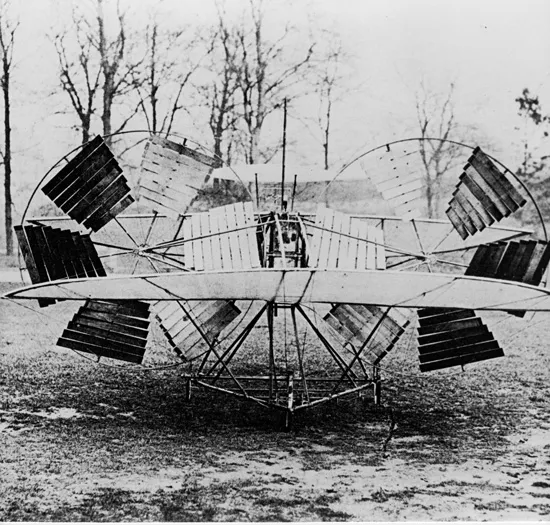Five Airplanes That Made No Difference
Celebrating the wrong turns in aviation’s early evolution.
/https://tf-cmsv2-smithsonianmag-media.s3.amazonaws.com/filer/5a/73/5a739daa-adb4-4c50-99c5-9e8db847df1e/equevilley_postcard.jpg)
Not everyone in the early days of flight was a Wright or a Curtiss.
These five aviation pioneers decided to go their own way, often unburdened by the principles of sound engineering or even the laws of physics. Some of the designers were inexperienced; others were gifted with too much imagination. But all have been largely forgotten. Until now.
The Marquis d’Ecquevilly. The multiplane, wrote Flight magazine in 1921, is easy to dismiss “as one of those freaks so dear to certain French inventors.” They must have had D’Ecquevilly in mind. As Phil Scott wrote for us in 2001, the Marquis “got into the aviation field in 1907 with his strange and beautiful multiplane. He started with a four-wheel platform on which the pilot stood, upon which he mounted a pair of oval hoops 16 feet across, which in turn acted as a frame for the five pairs of fairly flat wings. Two more wings were mounted on top of the pairs. The wings’ inboard sides were attached to a frame of five more ovals, and the engine—a 10-horsepower Buchet—was mounted on a pair of (what else?) circular frames. In the January 1909 issue of Aerophile, the Marquis likened the craft’s construction to ‘that of the big Ferris wheel of the [Paris Universal] Exhibition of 1900.’ There was no tail nor any control surfaces to speak of. Indeed, as the Marquis himself wrote, ‘It would be premature to speculate of how this machine would be controlled, insofar as its dynamic stability is so much more longitudinal than lateral.’ There is also no record of its having flown, either before the June 1908 fire that damaged it or afterward, when the Marquis rebuilt it with 50 smaller wings.”
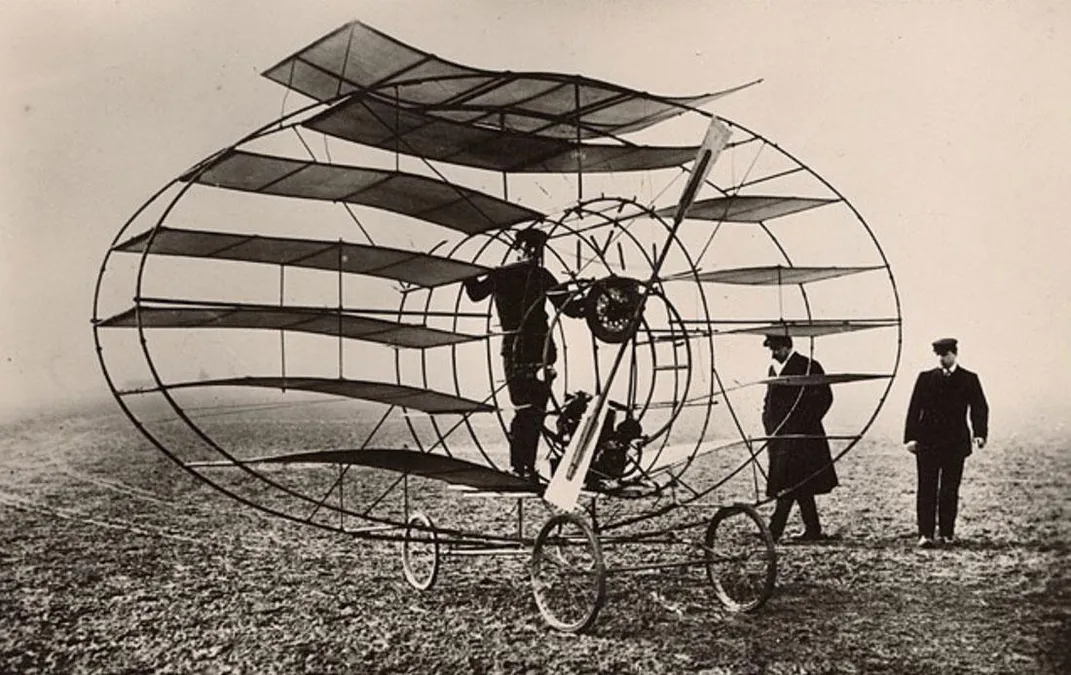
The Brothers Gonnel. Almost nothing is known about Arthur-Édouard and Raoul-Georges Gonnel and their Uniplan aircraft, which looks like a combination covered wagon and nun’s wimple. Their aircraft was summed up in 2010 in Incas Bulletin as “the strangeness.” In their 1910 patent (number 431,609), the brothers indicate that “the lift in flying machines leaves much to be desired”; in the patent summary, they note that the dome on their aircraft would form an “air reservoir,” effectively acting as a parchute. There’s no evidence that the Uniplan was ever flight-tested.
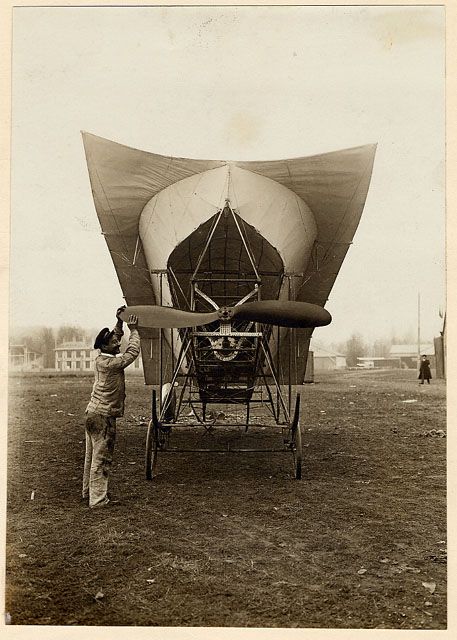
August Becher and Carl Wolf. As reported in the August 1909 issue of Aeronautics, Carl Wolf and August Becher (sometimes identified as “Angus Beecher”), of Oakland (or perhaps Fitchberg), California, built a dual-seat, triplane glider with a 220-foot surface, “planes 19 ft. 8 in. by 4 in. The machine has a double front rudder not superposed, each side capable of independent movement. Lateral stability is also had by warping the wings a la Wright. Launched on its skids from a hillside chute or track, flights up to 200 ft. have been made.” In the September issue of Aeronautics, the launching device was described further: “[Wolf and Becher] have built an inclined railway down which a car holding the glider runs and gives initial impetus. The start is 50 feet high. On the first attempt the heavy car in some manner caught fast to the machine and the glide terminated but a few feet from the end of the chute.” By July 1910, Wolf and Becher may have been competing regularly; that month’s Aeronautics notes that in a Tanforan (California) meet, held in conjunction with the San Francisco Motor Club, Wolf and Becher took second prize in the gliding contest. (A 10-year-old boy, Walter Sittman, won first prize.) Did the glider ever travel farther than 200 feet? We’re not sure; after 1910, Becher and Wolf seemingly drop out of history.
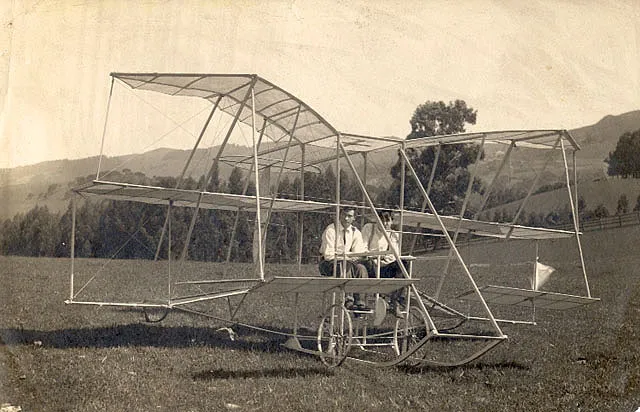
The Comte de Juiseux. The desire for a flying bicycle has been around for a long time; and, of course, there are a number of conceptual links between bicycles and airplanes. In 1896, James Howard Means, the editor of The Aeronautical Annual, published an article titled “Wheeling and Flying,” in which he writes, “It is not uncommon for the cyclist, in the first flash of enthusiasm which quickly follows the unpleasantness of taming the steel steed, to remark: ‘Wheeling is just like flying!’ ” We celebrate this enthusiasm with a misguided flying bicycle design by the Comte de Juiseux. Sadly, we can find no further information about this 1909 effort of the comte. We’re happy to report, however, that the dream of airborne bikes lives on today. Look in the current Hammacher Schlemmer catalog and you’ll see that for a mere $45,000, you can own what is advertised as the first flying bicycle (airspeed: 25 mph / range: 75 miles / altitude: below 4,000 feet). Guess they aren’t counting the pedal-powered Gossamer Albatross; AeroVelo’s Atlas; or Gamera, a human-powered helicopter created by University of Maryland students.
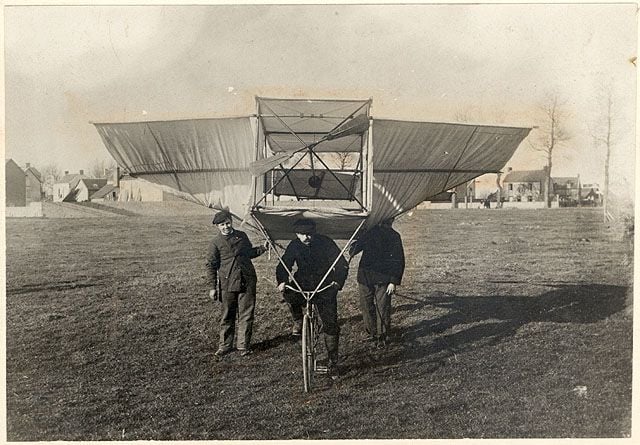
Thomas Moy. The Aerial Steamer was a 14-foot-long model of an unmanned tandem-wing aircraft, which Moy exhibited at the Crystal Palace (near London) in June 1875. Octave Chanute wrote of the attempt in “Progress in Flying Machines,” in the November 1892 issue of the Railroad and Engineering Journal: “the supporting surfaces consisted of two aeroplanes, one in front and the other behind the propelling aerial wheels.” A Stringfellow steam engine sat between the two wheels. The engine propelled the craft around a circular wooden path at 12 miles per hour; Moy estimated it would require 35 mph to achive flight. The craft was wrecked in a windstorm shortly after the demonstration; Moy rebuilt the craft and set the aerial wheels to rotate on a vertical axis, much like a helicopter. Moy ran out of funds before he could build a larger version; “he had to turn to hard work to live,” writes Chanute.
